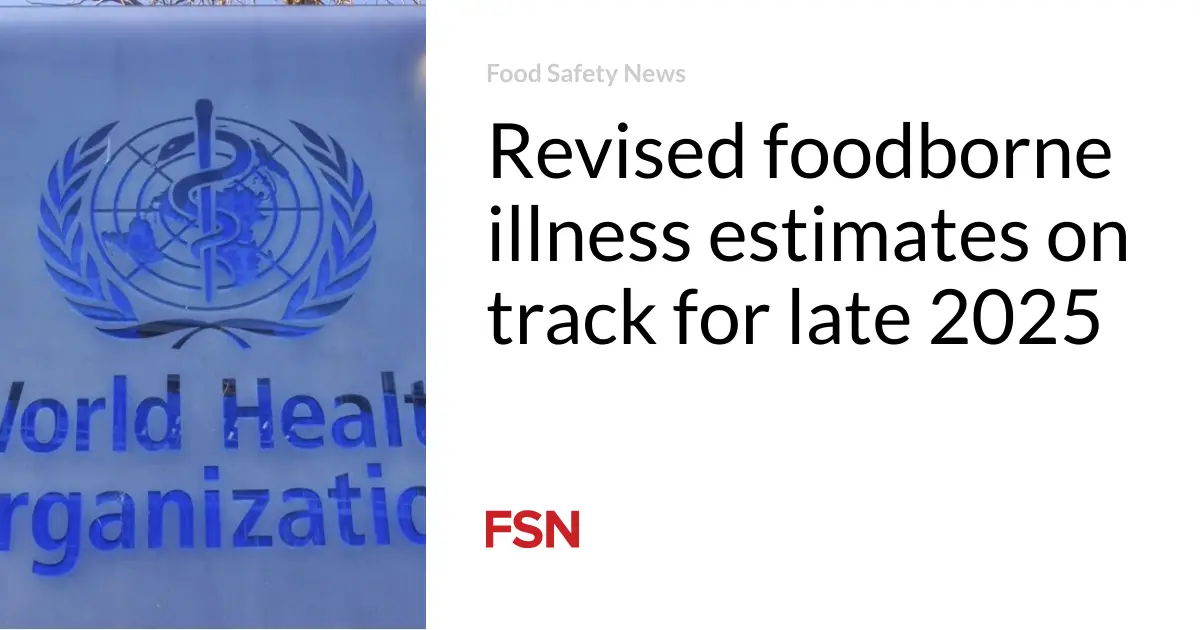
Efforts led by the World Health Organization (WHO) to update estimates on the burden of foodborne infections continue progressing, with publication expected next year.
In a webinar organized by the European Burden of Disease Network, two speakers shared insights into work by the Foodborne Disease Burden Epidemiology Reference Group (FERG).
Figures published in 2015 revealed that 31 hazards caused 600 million foodborne illnesses and 420,000 deaths in 2010. Updated data is planned for release by October 2025.
Most metrics in the revised edition will be the same as those used in 2015, but national numbers will also be included. Figures will be presented as a time series analysis from 2000 to 2020 or 2021.
New estimates will provide data on Trypanosoma cruzi, aflatoxin M1, inorganic arsenic, cadmium, lead, methylmercury, cyclospora, rotavirus, and Enteroaggregative E. coli (EAEC). An expanded list of health outcomes will also be included.
WHO’s approach
Yuki Minato, technical officer at the WHO Department of Nutrition and Food Safety, said: “Food safety is very complex because we are dealing with many different hazards, underreporting, and under ascertainment. The whole vision is trying to understand what is happening below the water, basically.”
Minato referenced a 2020 resolution by the World Health Assembly that mandated WHO to monitor and report on the burden of foodborne diseases at national, regional, and international levels.
“The transparency part is important for WHO as we want to ensure countries will use these estimates, and it’s not just going to sit on a shelf at WHO. We have engaged member states and requested governments identify their national focal points for this estimate. We are going to conduct an official country consultation next year. They will receive draft estimates before official publication so they can review, comment, and give feedback,” she said.
The 2025 estimates’ data collection teams include the University of Virginia for diarrheal diseases, Michigan State University for aflatoxin, and Gibb and O’Leary Epidemiology Consulting for inorganic arsenic.
FERG has seven task forces: enteric disease, parasitic disease, chemicals and toxins, source attribution, computational, impact measurement, and country support.
Assessing foodborne disease burden
Sara Monteiro Pires, a senior researcher at the Technical University of Denmark (DTU), said the 2015 report was important for raising global awareness of foodborne diseases.
“Our ultimate objective is to be able to prioritize food safety interventions. To do this, we need to answer a few questions. First, what is the public health impact of different foodborne diseases? Building on this, we want to know how to compare diseases according to their importance in different regions. After prioritizing the most important diseases, we need to know what is causing these problems. So, how can we identify the most important sources and routes of transmission and then prioritize our interventions? The third step is identifying the options for interventions across the food chain, and at the end, we would ideally want to measure the effect of each intervention.”
Pires, who is also a member of FERG, said there are over 250 causes of foodborne diseases, including bacteria, viruses, parasites, and chemicals.
“We typically face an underreporting problem with foodborne diseases; although we have data from surveillance on the number of cases in a population, we are not capturing all cases of the disease. Some of the diseases are not reported at all. Foodborne diseases have a wide range of health effects, and these vary in severity from mild to severe diarrhea but also neurological effects, cancer, and reactive arthritis. These also have different durations and case fatalities,” she said.
“Chronic diseases are difficult to attribute to a specific exposure; they are quite unspecific and can be caused by many different risk factors. They also appear long after exposure, so linking this directly to the food safety hazard is challenging. There are also various routes of exposure, even for one disease, and these sources and their importance will vary depending on the disease, the hazard, and the country.”
The goal of the burden of foodborne disease studies is to rank and prioritize diseases based on the public health impact caused in a specific population. Such work can help measure trends and the impact of food safety interventions, providing evidence for policymaking.
“We need to identify the most important sources of transmission. In the case of Campylobacter, an important reservoir is poultry, but infections can also be caused by dairy products or beef or by contact with infected live animals and environmental exposure,” said Pires.
“So if we want to use our burden of disease estimates to prioritize interventions, we need to identify which sources and routes of transmission are the most important. For this, we typically use source attribution. The first step is attribution to foods instead of environmental transmission, direct contact with animals, and person-to-person transmission, and then we might want to attribute to specific foods.”
(To sign up for a free subscription to Food Safety News, click here.)






